If you have not done so, read the previous related entry here.
The more exciting part of the trip is today as we are going to visit one of the ancient sites of Ephesus. Apparently there were many cities built in close proximity. The one we were visiting was built by the Ephesians. Basically very similar to Greek and later Roman cultures. After waking up to the morning Aegean and a nice breakfast we set off for the sights.
The more exciting part of the trip is today as we are going to visit one of the ancient sites of Ephesus. Apparently there were many cities built in close proximity. The one we were visiting was built by the Ephesians. Basically very similar to Greek and later Roman cultures. After waking up to the morning Aegean and a nice breakfast we set off for the sights.
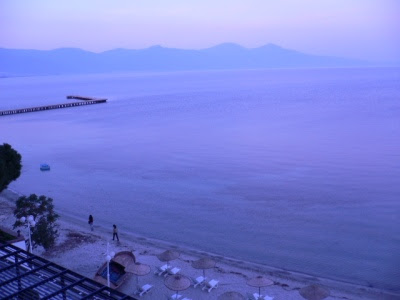
Morning blue on the Aegean

Looks very peaceful
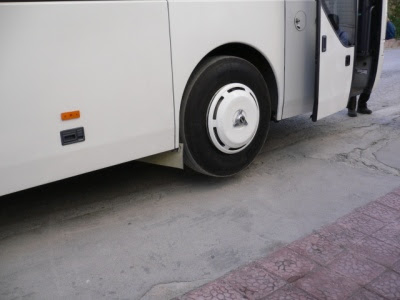
The flying bus is the next big thing after the flying carpet

Ephesus!
View Larger Map
Map of the route and sites (click to see details)

First view, we arrived through the back of the city where the senate is.

Crumbled columns. These columns used to support a wooden roof to block out the sun that shines rather strongly here. The sheltered walkway used to extend all the way to the port!

The City Senate

I forgot what this is.

The Goddess Nike! See the tick? She is the Goddess of Victory.

Food used to be stored around here.

Marble statue, the small block of marble at the bottom-right was to support the statue, otherwise it will topple.

The Gate of Heracles (Hercules). Notice the lion head in his hands. The skin is drapped around him.
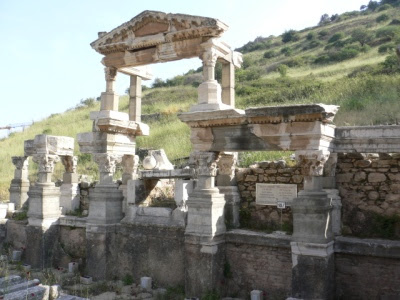
This was a fountain. Now, my guide refers to it as: "The worst reconstruction attempt!"
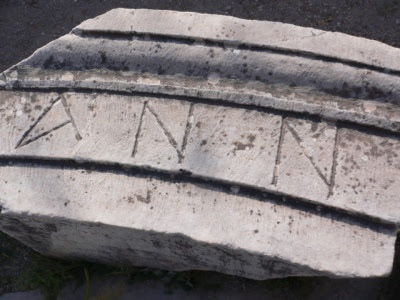
You can stil see some Greek Letters here and there.

Look at the patterns near the top of these columns. Such columns from Ephesus were brought to the Hagia Sophia which I will show later.
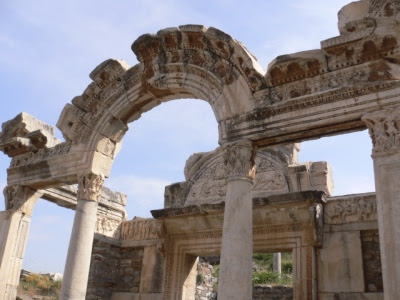
I think this was a sort of temple.
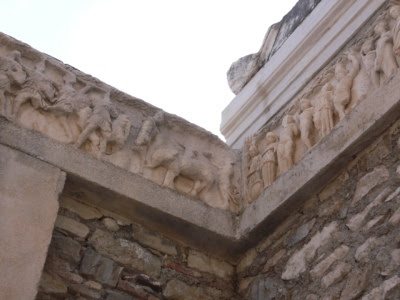
In temple, pictures of one of the founding story of Ephesus -- that the Amazons founded it.

In temple, pictures of the other founding story of Ephesus -- a wild boar led a rich and powerful Greek here.
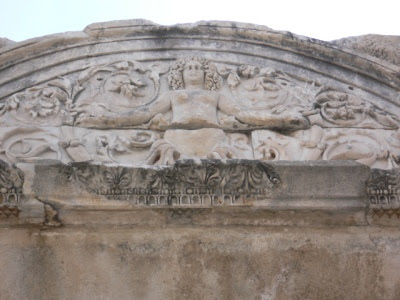
Illustration of Medusa the gorgon. Used to scare thieves away (or other bad stuff).
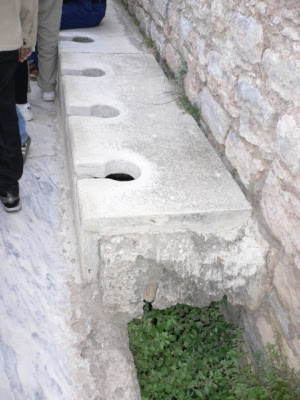
The toilet. Sitting there is like sitting in a meeting room. This is really a place where they do business (that is probably where the term doing business come about). In the center of the toilet there would be a musician. They will burn fragrance to ward of the smell. Below the holes is a deep channel with running water. In front there is a shallow waterway for washing hands. They will also bring a soft brush to brush their asses.

Close-up of business chair.

Library of Celsius. Was the 2nd largest in the world after the one at Alexandria. There was a brothel opposite the library, one of the biggest in that part of the world. They are still trying to excavate the alleged secret tunnel between the two.

Inside the library. They kept scrolls here not books.
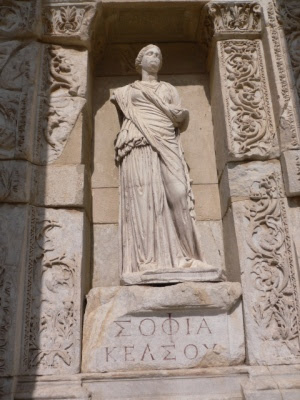
One of the four statues at the entrance
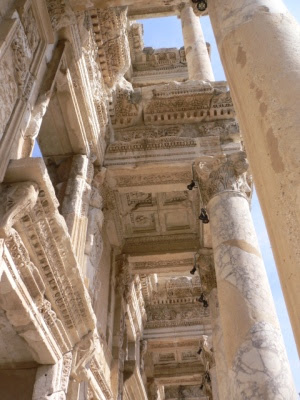
Beautiful patterns on the entrance ceiling

Passing the archway towards the Theater of Ephesus

Theater of Ephesus 25,000 capacity
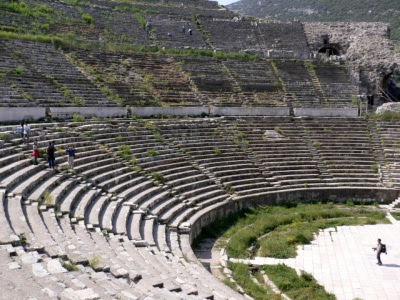
Nice semi-circle arrangement.

"Backstage", animals or artists will prepare here. The theater was also used for gladiator matches.

The "stage". The Romans added that backdrop to prevent their target audience from getting distracted by the scenery at the back. Theater in Roman times can be a medium for propaganda and brain washing.
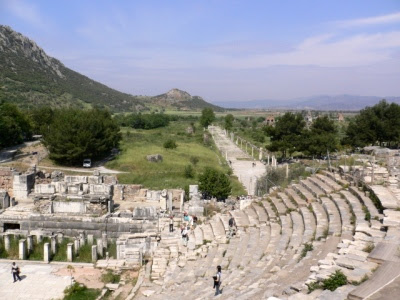
Sheltered walkway leading away from the theater.
A short video clip of the theater.

Toilets are a big business in these areas.
That concluded our tour of Ephesus next we moved on to one of the Seven Wonders of the Ancient World -- the Temple of Artemis. Artemis is the God of city dwellers. It is said that Alexander wanted to destroy it when he came. But the locals told him a story: one night the a fire started in the temple and they knew that Artemis left the temple, this night was the very night that Alexander was born. So they hypothesized that Alexander was born of Artemis. Pleased, Alexander donated large amounts of money to the temple.
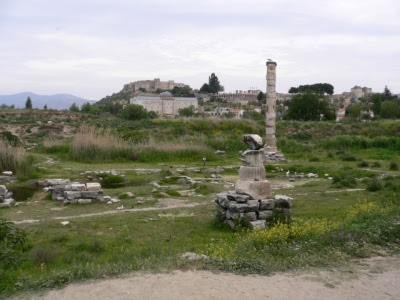
The two columns in the foreground are all that is left. The temple was destroyed by fire. A Seljuk castle is in the background. Seljuks were sort of the Ottoman predecessors.
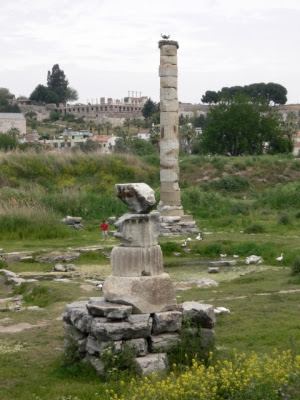
Close-up of pillars. There is a stork's nest on the taller one.

Clearer picture of the Seljuk Castle

The original temple layout.
Next up we proceeded to an important pilgrimage site nearby. The House of Virgin Mary. This is the official place Mary is believed to have resided till the end and is recognized by the Vatican. The house was rebuilt by the Ephesians years after Mary was gone, but carbon dating from the basement showed up to be 1st century.

Entering
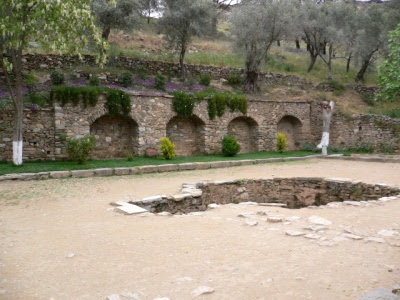
Baptism Pit for adults
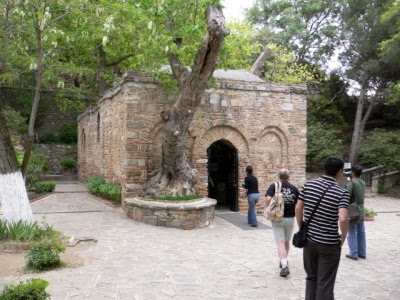
The house of Virgin Mary

No pictures allowed inside. This was taken from a poster outside. This is what it looks like inside the house.

Nearby there is a water-source believed to be used by Mary. These ribbons held wishes and were dipped in the water source before being hung here.

Some nice flowers nearby
























